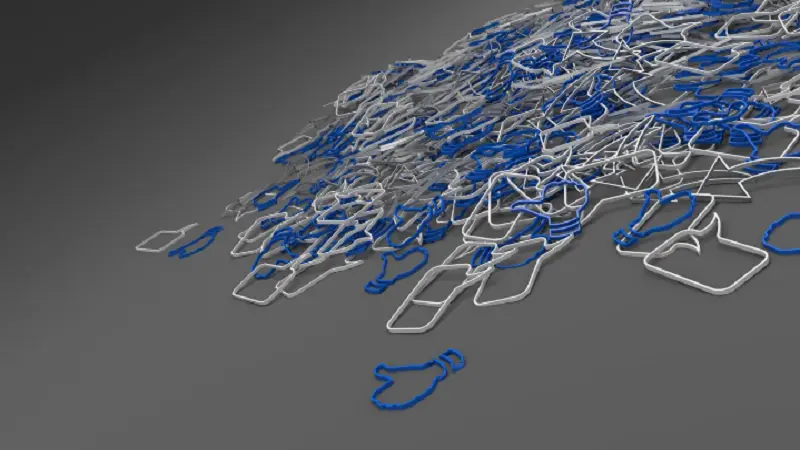- Introduction to Genrodot
- The Origins and Evolution of Genrodot
- Understanding How Genrodot Works
- Key Features and Capabilities of Genrodot
- Major Applications and Use Cases
- Benefits of Using Genrodot in Modern Technology
- Challenges and Considerations in Genrodot Implementation
- The Future of Genrodot: Trends and Innovations
- Conclusion: Why Genrodot Matters Today and Tomorrow
Introduction to Genrodot
Genrodot has rapidly emerged as a critical component in the world of modern technology. For individuals unfamiliar with this term, Genrodot may sound complex or abstract, but at its core, it represents a groundbreaking innovation that touches various aspects of technology. In this article, we will explore what Genrodot is, why it has gained importance, and what potential applications make it a topic of interest across industries.
The Origins and Evolution of Genrodot
Genrodot is a relatively recent development in the tech world. Originating from the need to streamline processes, its design has been influenced by advancements in automation, machine learning, and network technology. This section explores the roots of Genrodot, tracing back to early experiments in automating workflows and creating intelligent networks that communicate seamlessly.
Initially conceptualized for specific industrial tasks, Genrodot’s flexibility and scalability have allowed it to evolve. It went from a specialized tool to a more generalized solution used by various industries for enhancing productivity and efficiency.
Understanding How Genrodot Works
Understanding its functionality is essential to grasping the significance of Genrodot. At its core, Genrodot utilizes algorithms that analyze data inputs, predict patterns, and respond accordingly. Through these algorithms, it optimizes workflows, predicts potential issues, and aids in making real-time decisions, all with minimal human intervention.
Genrodot integrates with various systems, analyzing data collected from sensors, machines, or software. Using this data, it applies predictive analytics to create optimized outcomes and automatically adjusts based on new information. This adaptability makes Genrodot particularly valuable for dynamic industries where real-time decision-making is crucial.
Key Features and Capabilities of Genrodot
Genrodot is packed with several standout features that set it apart:
- Automation: Genrodot automates repetitive tasks, allowing human operators to focus on more complex activities.
- Predictive Analysis: By analyzing historical data, it predicts potential outcomes, enabling proactive measures rather than reactive fixes.
- Scalability: Designed to grow with the needs of the user, Genrodot can handle increasing volumes of data and adapt to new demands without major overhauls.
- Integration: It integrates smoothly with other systems, making it versatile and adaptable across different sectors.
- Real-Time Processing: One of Genrodot’s most valued capabilities is its ability to process data in real time, which is vital for industries that rely on instantaneous responses.
Major Applications and Use Cases
Genrodot is a versatile tool with applications in numerous fields:
- Manufacturing: Genrodot can streamline assembly lines, reduce production delays, and predict maintenance needs for machinery, resulting in increased uptime and lower costs.
- Healthcare: In healthcare, it helps manage patient data, predict health outcomes, and optimize hospital workflows, enhancing patient care and operational efficiency.
- Finance: Genrodot can detect patterns in financial transactions, identify potential fraud, and manage real-time financial data, crucial for risk management and strategic planning.
- Retail: From inventory management to customer data analysis, Genrodot assists retailers in optimizing stock levels, understanding consumer behavior, and increasing sales efficiency.
- Transportation: Logistics companies use Genrodot for route optimization, tracking deliveries, and managing fleet maintenance schedules, ensuring timely deliveries and cost savings.
Benefits of Using Genrodot in Modern Technology
The adoption of Genrodot in technology yields numerous benefits:
- Improved Efficiency: By automating routine tasks, Genrodot increases productivity and reduces errors.
- Cost Savings: Through predictive maintenance and real-time monitoring, companies can avoid costly breakdowns and reduce downtime.
- Enhanced Decision-Making: With its predictive analysis capabilities, Genrodot empowers users to make data-driven decisions that can anticipate future challenges.
- Customer Satisfaction: By optimizing processes and ensuring quality control, Genrodot can improve customer satisfaction, particularly in service-focused industries.
- Scalable Solutions: Genrodot’s scalability makes it future-proof, allowing businesses to start small and expand as their needs grow.
Challenges and Considerations in Genrodot Implementation
Despite its advantages, implementing Genrodot comes with challenges:
- Initial Costs: The setup and integration of Genrodot can be expensive, especially for smaller companies.
- Training Requirements: For teams unfamiliar with advanced automation, training is required, which can be time-intensive.
- Data Security: Genrodot relies on data, making it essential to have robust security measures to protect against breaches and ensure compliance with privacy regulations.
- System Compatibility: Integrating Genrodot into existing systems may require compatibility checks and adjustments to avoid disruptions.
These challenges are often mitigated over time, but companies must consider them to ensure a successful Genrodot deployment.
The Future of Genrodot: Trends and Innovations
The future of Genrodot holds exciting potential. As technology continues to advance, Genrodot will likely integrate more with AI and IoT, creating “smart” systems that operate almost autonomously. Emerging trends such as decentralized data processing and cloud computing will likely influence Genrodot’s capabilities, allowing even faster and more secure processing.
Innovations may include deeper learning capabilities, enabling Genrodot to understand more complex patterns and provide even more precise recommendations. The combination of Genrodot with machine learning and blockchain could enhance transparency and accountability, especially in sectors requiring strict oversight.
Conclusion: Why Genrodot Matters Today and Tomorrow
In conclusion, Genrodot stands out as a pivotal tool in today’s technological landscape. With its array of features and benefits, Genrodot provides solutions to real-world problems, offering improved efficiency, cost savings, and enhanced decision-making capabilities. As industries look for ways to optimize operations and stay competitive, Genrodot is set to play a crucial role in transforming workflows and creating value across sectors.
As technology continues to evolve, Genrodot’s adaptability and scalability ensure that it will remain relevant. Companies that adopt Genrodot early stand to gain a competitive edge, while industries that may not yet see its benefits could eventually find themselves adopting it to keep pace.
Ultimately, Genrodot exemplifies the intersection of innovation and practicality, embodying a future where technology and automation enhance human potential and redefine the boundaries of what’s possible in the world of industry and beyond.
This article provides a structured, engaging look at Genrodot, making complex concepts accessible and highlighting the importance and future potential of this technology.



